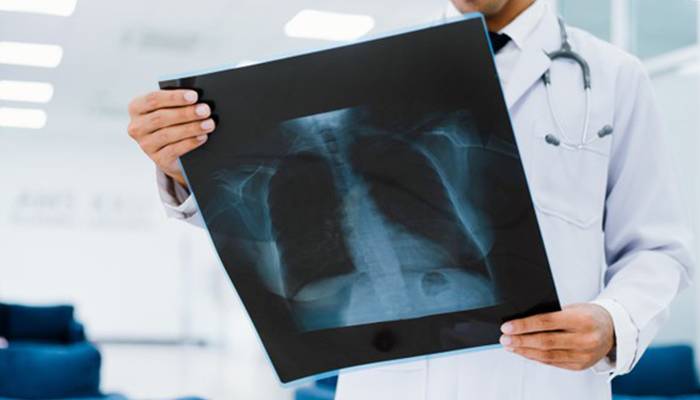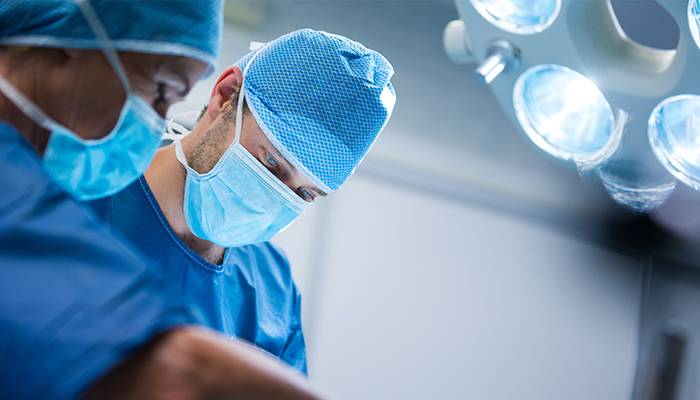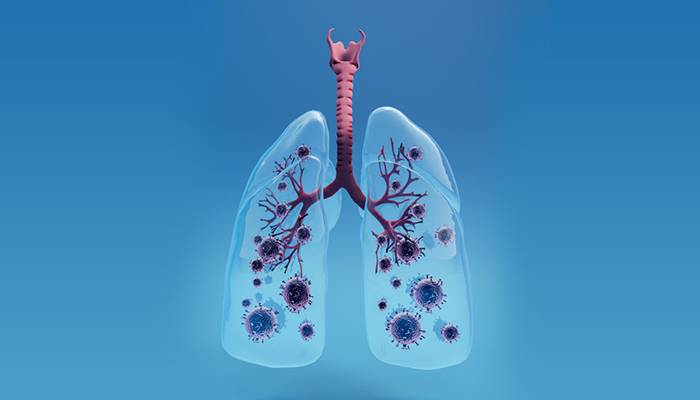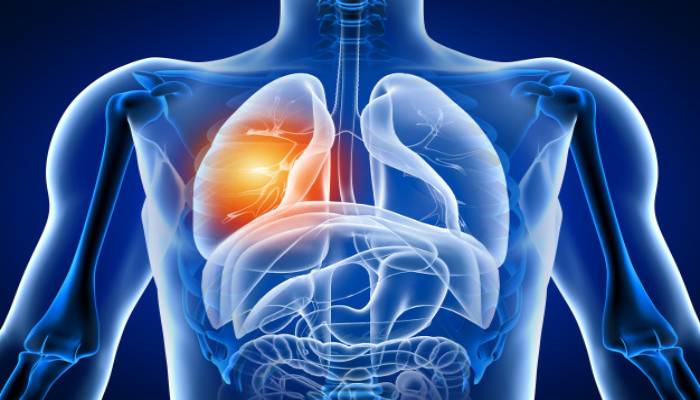Lung transplantation or pulmonary transplantation is a surgical process in which the diseased lungs of a recipient are partly or entirely replaced by lungs that come from a donor. It is possible to recover donor lungs from a live donor or a dead donor.
Lung Transplantation
A live donor may donate just one lung lobe. With certain lung disorders, only a single lung can need to be given to a patient. For other lung conditions, such as cystic fibrosis, it is vital that a patient acquires two lungs.
While lung transplants face some associated risks, they can also increase life expectancy and improve the quality of life of end-stage lung patients.
Reasons for a lung transplant
Although the lungs are affected by multiple cancers, not all lung diseases are cured by a lung transplant. Cystic fibrosis, pulmonary hypertension, bronchiolitis obliterans, and interstitial lung disease are the most prevalent conditions leading to lung transplantation. Other illnesses that affect the lungs, which may result in transplantation include:
- Bronchiolitis obliterans (post-infectious, associated with Stevens-Johnson Syndrome, associated with bone marrow transplant and lung transplant).
- Bronchopulmonary dysplasia without significant co-morbidities.
- Chronic aspiration of gastric contents that will not recur.
- Chronic interstitial lung disease.
- Cystic fibrosis.
- Diffuse pulmonary arteriovenous shunt syndromes.
- End-stage bronchiectasis due to a treatable form of immunodeficiency.
- Surfactant protein dysfunction syndromes.
- Idiopathic pulmonary arterial hypertension.
- Pulmonary fibrosis after radiation therapy.
- Pulmonary fibrosis after severe pneumonia or adult respiratory distress syndrome.
- Pulmonary hemosiderosis.
- Pulmonary Hypertension with associated congenital heart disease (if heart defect can be repaired at the time of transplant).
- Pulmonary hypoplasia (under-development), either as an isolated condition or due to congenital diaphragmatic hernia or malformations of the lung or chest wall.
- Pulmonary Veno-occlusive disease.
- Pulmonary vein stenosis, refractory to interventions.
Many forms of lung disease can lead to pulmonary end-stage failure. In some cases, cardiac function can also be seriously compromised by lung failure, which may involve heart and lung transplantation.
Lung transplant requirements
Requirements for potential donors
Because of the wishes of the prospective beneficiary, there are also criteria for potential lung donors. In the case of live donors, this also brings into account how the surgery can impact the donor.
- Healthy Size Match
- Age
- Blood Type
- The lungs or lungs donated must be large enough to oxygenate the patient sufficiently, but compact enough to fit into the chest cavity of the recipient.
Requirements for potential recipients
Although a transplant center can set its standards for applicants for transplants, similar conditions are generally decided upon.
- Lung End-Stage Disorder
- Has exhausted other treatments available without success
- No other chronic diseases (e.g., heart, kidney, liver)
- Within an acceptable weight range
- Age (single vs double TX)
- Acceptable psychological profile
- Has a system of Mutual Assistance?
- Financially able to pay for expenses
- Capable of conforming to the post-transplant regimen. A lung transplant is an effective procedure, and the recipient must be able to stick to a lifetime opioid regimen as well as a continued medical treatment after the transplant.
Health Examination for potential transplant candidates

To determine their general health status and suitability for transplant surgery, patients who are considered for inclusion on the organ transplant list receive rigorous diagnostic examinations.
- Chest X-ray– PA & LAT, to verify the size of the lungs and the chest cavity
- Pulmonary function tests
- CT Scan(High-Resolution Thoracic & Abdominal)
- Bone mineral density scan
- MUGA(Gated cardiac blood pool scan)
- Cardiac stress test(Dobutamine/Thallium scan)
- Ventilation/perfusion
- Echocardiogram
- Cardiac catheterization
- Electrocardiogram
Blood typing: the blood form of the recipient must match the donors due to antigens found in the donated lungs. A blood type imbalance can lead to a healthy immune system response and eventual rejection of transplanted organs.
Tissue typing: preferably, the lung tissue will then complement the donor and the recipient as closely as possible, but the need to choose a highly suitable donor organ must be balanced against the urgent need of the patient.
What are the potential benefits of a lung transplant?
You may be candidates for a lung transplant if you have cystic fibrosis and the lungs are performing poorly. You may have difficulties breathing and staying out of things that you once loved.
An effective lung transplant can, in tangible ways, boost your quality of life. It would be easier to breathe in a new set of healthy lungs. This will assist you in partaking in more of your favored pastimes.
Lung allocation score
Previous to 2005, donated lungs within the United States were assigned to patients on the transplant list on a first-come, first-served basis by the United Network for Organ Sharing.
This was supplemented by the new system in which a lung allocation score or LAS, which takes into account multiple patient health indicators, is allocated to prospective lung recipients aged 12 and over.
Following the immediacy of need, the new system gives donated lungs rather than how long a patient has been on the transplant list.
Based on how long they have been on the transplant waitlist, patients who are under the age of 12 are also given preference, when several patients with the same lung allocation ranking, the amount of time spent on the list is also the determining factor.
In the event of a donor organ being available, patients approved as successful future transplant candidates must keep a pager with them at all times. These patients will need to be able to travel at a moment’s notice to their preferred transplant site.
To promote easy transportation to a transplant site, individual patients may be advised to restrict their travel within a specific geographical area.
Types of Lungs Transplant
Lobe
A lobe transplant is a procedure where part of the lung of a live or dead donor is removed and used to replace the diseased lung of the recipient. This operation involves the donation of lobes from two separate individuals in living donations, replacing a lung on either side of the recipient.
Despite the drop in lung volume, donors who have been appropriately tested should be able to preserve a reasonable quality of life. One donor may have both lobes for deceased lobar transplantation,
Single-lung
The transplantation of a single healthy lung will benefit multiple people. Usually, the donated lung comes from a donor who has been pronounced brain-dead.
Double-lung
Individual patients can need the removal of both lungs. Because of the bacterial colonization typically present in the lungs of those patients, this is precisely the case for people with cystic fibrosis; if only one lung was transplanted, bacteria might theoretically invade the freshly transplanted organ in the native lung.
Heart-lung
Some respiratory patients may also have severe cardiac disease, which would necessitate a heart transplant. These patients can be treated by surgery in which organs from a donor or donors replace both lungs and the heart.
An incredibly involved example of this has been termed a “domino transplant” in the media. First performed in 1987, this type of transplant typically involves the transplantation of a heart and lungs into recipient A, whose own healthy heart is removed and transplanted into the recipient.
Procedure

While the surgical specifics will depend on the type of transplant, both of these procedures have several steps in common. The transplant surgeon inspects the donor lung(s) for signs of injury or illness before operating on the receiver.
If the lung or lungs are authorized, then an IV line and various measuring instruments, including pulse oximetry, are attached to the patient. General anesthesia will be given to the patient, and for him or her, a computer will breathe.
The patient’s pre-operative care takes about one hour. It takes about four to eight hours for a single lung transplant, while a double lung transplant takes about six to twelve hours to finish. The operation can be affected by a history of previous chest surgery and takes more time.
Single-lung
The lung with the worst pulmonary function is preferred for the replacement of single-lung transplants. The right lung is typically preferred for elimination if both lungs work similarly, so it prevents having to maneuver around the heart, as would be needed for left lung excision.
The procedure continues with a single-lung transplant after the donor’s lung has been inspected, and the decision to approve the patient’s donor lung has been made. An incision is usually made across the chest from under the shoulder blade, stopping near the sternum.
An alternative procedure requires an incision beneath the breastbone. The lung fails, the blood vessels in the lung are tied up, and the lung is separated from the bronchial canal in the case of a single lung transplant.
The donor’s lung is put in order, the bronchial tube and blood vessels are reattached, and the lung is reflated. A bronchoscopy may be done to ensure sure the lung is sufficient and to remove all excess blood and mucus in the new lung. The chest incision will be closed when the surgeons are pleased with the lung results.
Double-lung
A double-lung transplant may be performed either sequentially, en bloc, or concurrently, also known as a bilateral transplant. More popular than block, sequential is. This is similar to having two single-lung transplants performed simultaneously.
Once the donor’s lungs are inspected, and the decision to transplant has been made, the transplantation process continues. An incision is then made from under the armpit of the patient, across the sternum, and then back into the other armpit; this is referred to as an incision of the clamshell.
In the event of a sequential transplant, the lung of the patient with the weakest lung functions fails to bind off the blood vessels and breaks off the resulting bronchi. Then the new lung is located, and the blood vessels are reattached.
A bronchoscopy is done to ensure the lung is adequate before transplanting the other one. Surgery on the second lung will continue until the surgeons are pleased with the success of the new lung.
The recipient is hooked up to a heart-lung system that delivers blood to the body and delivers fresh oxygen in 10% to 20% of double lung transplants.
Risks of Lungs Transplantation

There are chances of bleeding and contamination, such as in any medical operation. The newly transplanted lung itself might fail to heal and function properly. If the outside environment has been applied to a substantial part of the patient’s body, sepsis is a risk, so antibiotics would be administered to attempt to avoid it.
Post-transplant lymphoproliferative disease, a type of immune suppressant lymphoma, and gastrointestinal inflammation, and ulceration of the stomach and esophagus are some complications.
A key risk is transplant failure, both shortly after the procedure and over the life of the recipient. Since the transplanted lung or lungs are from another person, the immune system of the recipient may see it as an invader and try to neutralize it. Rejection from transplants is a critical condition that must be treated as quickly as possible.
Signs of rejection
- Fever
- Flu-like effects, including chills, dizziness, fatigue, feeling sick in general, sweating at night;
- Increased respiratory difficulties;
- Worsening results of pulmonary testing;
- Pressure or tenderness in the chest increased;
- Increase or decrease of more than two kilograms of body weight in a 24-hour cycle.
What does lung transplant involve?
Your surgical team would make a horizontal incision below your breasts to perform a double lung transplant. Your weakened lungs will be removed, and the donor’s lungs will replace them.
Blood vessels and airways between your body and the lungs of your donor would be connected. In some instances, during this operation, they can use a heart-lung bypass machine to keep oxygen circulating into the body.
Using stitches or staples, the surgical team will cover your chest. To allow fluids to exit, they will dress the incision wound, leaving a few tubes in. Such lines are temporary. Until you can breathe without it, you’ll still have a breathing tube implanted.
You will be checked for ventilation, heart rate, blood pressure, and oxygen levels right after the surgery. You will be taken out of intensive care until it is running reasonably. When you heal, you’ll have to be closely watched. To discover how well your lungs, kidneys, and liver is functioning, you will perform annual blood checks.
Depending on how good you’re doing, your hospital stay would usually last a week or two. Your medical team should give you guidance on how to care for your incision and support your healing at home before you’re discharged.
Can Coronavirus cause in the lungs?

Lung complications such as pneumonia and in the most extreme cases, acute respiratory distress syndrome, or ARDS, can be caused by COVID-19, the illness caused by the modern Coronavirus.
Another potential COVID-19 complication, sepsis, can also inflict permanent damage to the lungs and other organs.
How successful is a lung transplant?
In recent years, the survival rate for patients with lung transplants has increased. The one-year survival rate of single-lung transplants is nearly 80 percent, according to the National Heart, Lung, and Blood Institute (NHLBI). More than 50 percent is the five-year survival figure. 20 years ago, those figures were even smaller.
How long can a person live with a lung transplant?
Long-term survival following a lung transplant is not as good for these reasons as it is after other organ transplants, such as kidney or liver transplants.
Today following a lung transplant, more than 80% of individuals live at least one year. About 55 percent and 70 percent of people undergoing lung transplants are alive after three years.
How much does a lung transplant cost?
A double lung donation, including the organ processing bill, treatment charges, specialist fees, and the expense of examination, follow-up, and immunosuppressive medications, will amount to around $543,900, the United Network for Organ Sharing estimates. It will cost $655,600 or more for a heart and lung transplant.
Tips for conversing with your doctor

Ask the doctor before seeking a lung transplant if any possible choices have been investigated first. Ask them to help you consider a transplant’s potential benefits and risks. If you do not opt for the transplant, inquire what you should expect.
It’s time to think more about what lies ahead until you are secure with the possibility of a lung transplant. You will need to be prepared if you’re on the donation list to get the message that your donor’s lungs have arrived, no matter when it comes.
To get the dialogue with your doctor underway, here are a few questions:
When I am on the waiting list, what do I need to know and do?
When the lungs become usable, what arrangements should I make?
Who is going to make up the team for lung transplants, and what is their experience?
After the surgery, how long do I intend to live in the hospital?
After the surgery, what drugs would I need to take?
What are the signs after surgery that mean that I need to see a doctor?
How much do I need to follow up and what research is going to be involved?
What is the recovery going to be like, and what is my long-term outlook?
Let the answers from your doctor lead you towards more in-depth questions.
Lung Transformation Process
READ THIS NEXT
The Fast Metabolism Diet For Lose Weight
Benefits of Using Conditioner Before Shampoo
How to Drink Matcha Tea for Weight Loss
How Much Weight Loss Surgery Cost
